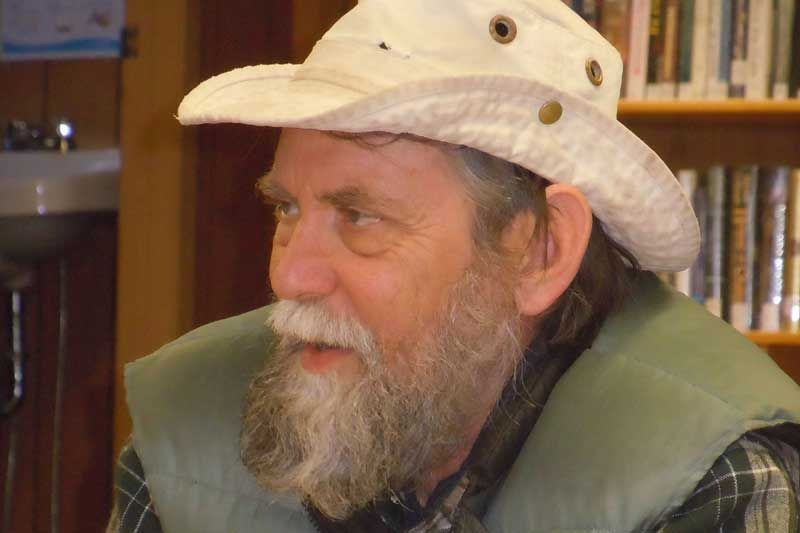May 29, 2013
Fred Schueler knows a thing or two about mussels in Eastern Ontario and he is hoping to learn a lot more, specifically about those in and around the Salmon River. For that reason he is enlisting the help of area residents for his 2013 Salmon River Mussel Survey.
Schueler, along with his wife Aleta, runs the Bishop Mills Natural History Centre, whose mission is “to study and publicize those groups of organisms that are widely noticed but not recognized to be species, and especially those whose status is rapidly changing, either due to decline of native species, or the spreading of invaders”.
Schueler spoke of his reasons for creating the 2013 Salmon River Mussel Survey at a special talk at the Tamworth Public Library on May 26. He said that prior to European settlement, native Unionoid Mussels were “the dominant filter-feeding organisms in North American rivers and lakes, often covering their bottoms at densities of hundreds per square metre and with an astonishing number of species in any one single bed.” He described how their filtering “kept the water clear and “the digging action of their feet kept the underlying sediments oxygenated”. He said that presently in many drainage basins, many species of mussels have been declining as a direct result of “sedimentation, pollution, the loss of host fish and direct human predation.”
In 1986 it was the introduction of European Zebra Mussels that have made matters worse for what Schueler calls “these subtly lovely bi-valves”. He says that the Moira River “supports a diverse mussel fauna; the Napanee River much less so.” However, it is the Salmon river that he will be focusing on in this survey.
In 1996 he began exploring mussels in the Salmon River and since then has identified 10 species, two of which include the endangered Ligumia nasuta (a.k.a. the Eastern Pond mussel) and the Villosa iris (Rainbow mussel) both found in Beaver Lake near Tamworth and in the Salmon River. In a preliminary document that outlines the survey Schueler states, “There's no better way to spend a summer than wading or canoeing in creeks, rivers and lakes to document hidden nodes of unionoid abundance”. Further, he says “It behooves naturalists to get to work before these... our largest invertebrate animals are gone from many places where we wouldn't have even have known they existed.” Volunteer surveyors, he says, will become “unionoid experts” as they sample sites along the length of the Salmon River, which will be referenced by a checklist of road accessible points. The check list will be updated so surveyors can know which sites have been visited. Schueler explained that the primary procedure will be to gather bagfuls of shells, dry and sort them, report the findings by email and bring the samples to a final meeting that will be held in the fall. The information from the survey will be used to understand and further study mussel ecology in the Salmon River.
According to Owen Clatkin, who is assisting with the survey, “The purpose of the survey is to acquire information that will be used to understand mussel ecology and to monitor the evolution of bivalve ecology in local watersheds with the hope of re-introducing species that have been extirpated from other areas.”
Anyone interested in becoming a musselhead can go to This email address is being protected from spambots. You need JavaScript enabled to view it. to find out more.
More Stories
- Limestone Student Achievers
- North Frontenac wins grant sweepstakes and will upgrade Clar Mill Rink
- Back Forty Artisan Cheese Presents the 8th Annual “Curds and Cooks” Summer Festival
- The Mississippi Land Trust is Working Hard to Acquire 2 New Properties In North Frontenac
- Sydenham Lake Canoe Club Places at Ontario Team Trials
- Battery Energy Storage Coming To North Frontenac
- The Kashwakamak Lake Association AGM
- Choosing Collaboration Over Division
- The Roar
- South Frontenac Council - Elements Outdoors Rezoning And Mayor Miffed Over Orser Road Calming

